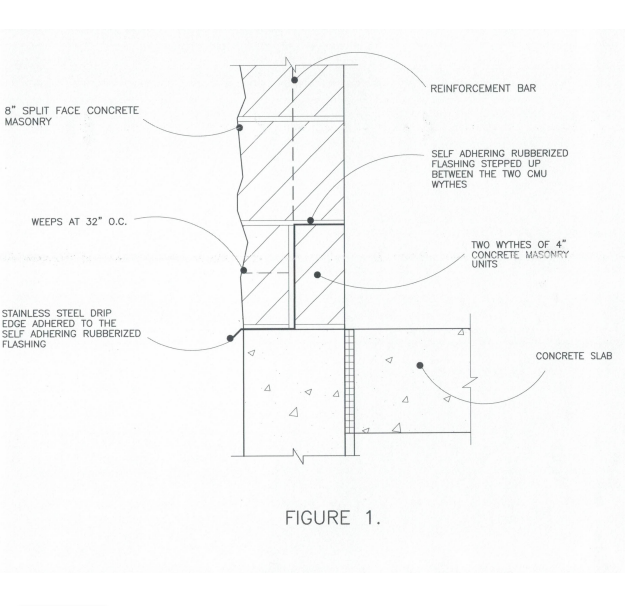Little Known Questions About Concrete Design.
Wiki Article
The Best Strategy To Use For Ready Mix Concrete
Table of ContentsThe 8-Minute Rule for Polished Concrete10 Simple Techniques For Concrete MixerReady Mix Concrete for BeginnersLittle Known Facts About Ready Mix Concrete.Cinder Block Fundamentals ExplainedSome Known Facts About Polished Concrete.
Thin-set has a noticable adhesive top quality and also is often referred to as thin-set adhesive. The Spruce/ Liz Moskowitz.What is stonework in building construction? Building and construction of poured concrete, enhanced or unreinforced, is typically also thought about masonry.
Brick Stonework: Brick is the most preferred material for masonry. What is the distinction between brick as well as stonework? With block veneer, the architectural support comes from the concrete, steel, or timber that makes up the backup wall, as well as the brick is on the exterior for aesthetic purposes.
The Ultimate Guide To Concrete Pavers
What is the distinction in between concrete and stonework? Concrete is a composition of various aspects prepared in a factory while stonework is made on-site of bricks and also mortar. Concrete is put into mold and mildews while bricks and mortar are joined to develop masonry.Regular assessments help determine sources of leakages, damaged mortar and also cracks. What are the 3 types of stonework? Bricks are the most famously recognized stonework products, although numerous various other sources can be made use of, such as stone and cinder block. Block Masonry. Brick is one of the most popular form of stonework asked for today.
Concrete Blocks. How do you tell if a house is structure or masonry? A typical means to identify the real building kind is checking out the home windows, if the inset is nearly flush with the outside wall it is framework, if the inset has to do with 4 inches deep it will be masonry building.
The Buzz on Ready Mix Concrete
However brick is cheaper than stone. Both can withstand the elements, including strong winds, warm sun, as well as sub-freezing temperatures. What are the 3 sorts of stonework?.Masonry and concrete are not the very same point; as a basic policy masonry is describing the bricks, stones, and obstructs utilized while concrete describes a type of cement, various other products, and water that can be established into huge types to make a building without the smaller sized units of rocks or bricks stacked upon each other.
Stonework may additionally refer to the ability or trade of collaborating with rocks and also blocks to construct specifically as well as skillfully. The kind of concrete you wish to select relies on the area of the structure it will be made use of and the range of the job. The product that is made use of to mix with the concrete in concrete as an accumulation will figure out the hardness, water resistance, and also weight of the concrete forms that are being made.
The Of Cinder Block
It can be a precise scientific research to get the needed results, yet the experts have actually had several years of experience and also can quickly blend a set of concrete appropriate for whatever job is at hand. The type of masonry you want to choose is go to website a matter of preference and also the honesty of the job.It is essential to employ a mason with experience as well as an read here eye for both the charm of the project as well as also the stability. When done right, developing with stone can lead to an item of design that stays strong as well as attractive for several years. Whether you picked concrete stonework, put concrete walls, or rock stonework, the integrity of your structure will likely be significantly better for picking these fire resistant tough mediums to build with (cement mixer).
While masonry and also concrete are both used for developing wall surfaces and also other structures that compose buildings, the 2 are very different in regards to application as well as the approach of preparation below are some of the most vital distinctions: Make-up while cement is developed using cement, water and also some type of aggregate, block wall such as stone or sand, stonework uses brick or rock elements glued with each other with mortar, a combination cement, sand and water; Prep work both concrete as well as the mortar made use of to make blocks stick can be made in a mixer, however in many situations, concrete is manufactured in big amounts in a factory as well as it is transported to the building site prepared for being made use of; Application concrete is usually poured right into molds to form articles, floors and walls, while masonry wall surfaces are constructed block by brick, stone by stone, spreading out a layer of mortar on the top of a layer of blocks, then laying bricks on the mortar and also proceeding the procedure until the desired elevation is gotten to; Resilience both concrete and masonry walls are resistant and also sturdy structures, the option in between the 2 being identified by the sort of the building, budgeting considerations, architectural and also terrain-related factors.
Polished Concrete Fundamentals Explained

Mortar protects the blocks together, which remainder on concrete grounds. There are no forms (like those needed for poured concrete structures) to configure and secure the blocks.

Fascination About Stamped Concrete

Contractors may locate it challenging, lengthy, and also pricey to vehicle in damp concrete to the work website. Water leakage problems in poured concrete foundations, Poured concrete can split as well as leak otherwise ready properly. Poured concrete walls may leak moisture with non-structural cracks in the wall surface (where the wall surface and also flooring fulfill, at the top of the structure wall surface or through the permeable concrete).
Report this wiki page